Home>Furniture>Outdoor Furniture>How Do I Enclose My Patio
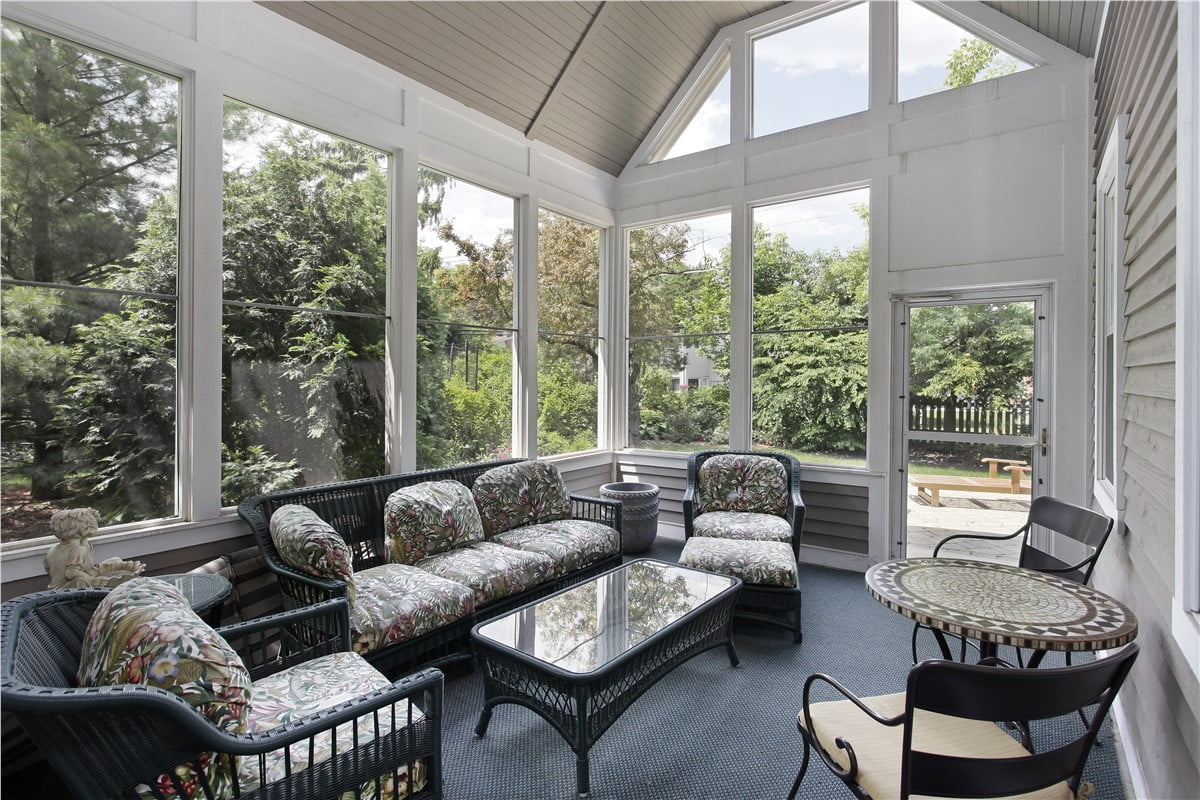

Outdoor Furniture
How Do I Enclose My Patio
Modified: March 7, 2024
Looking to enclose your patio? Discover the best outdoor furniture options to create a cozy and stylish outdoor space.
(Many of the links in this article redirect to a specific reviewed product. Your purchase of these products through affiliate links helps to generate commission for Storables.com, at no extra cost. Learn more)
Introduction
When it comes to enjoying your outdoor space, sometimes the weather can be less than cooperative. Whether it’s excessive heat, pesky insects, or the chill of the winter months, these factors can deter you from fully utilizing your patio. That’s where patio enclosures come in. By enclosing your patio, you can create a versatile and comfortable space that can be used year-round. In this article, we’ll explore the various types of patio enclosures, discuss the benefits of enclosing your patio, and provide important considerations to keep in mind when undertaking this project.
Reasons to Enclose Your Patio
There are several reasons why homeowners choose to enclose their patios. Firstly, an enclosed patio provides protection from the elements. During hot summer days, a glass or screen enclosure can shield you from the scorching sun. In the cooler months, a properly insulated enclosure can keep the space warm and cozy, allowing you to enjoy the outdoors without freezing temperatures.
Another benefit of enclosing your patio is the added privacy it offers. With a patio enclosure, you can create a secluded space where you can relax, entertain, or engage in hobbies without being exposed to prying eyes. This can be especially useful if you live in a densely populated area or have close neighbors.
If you’re an outdoor enthusiast, enclosing your patio allows you to bring nature closer to you. You can enjoy the beauty of your surrounding landscape without dealing with bothersome bugs or other critters. Additionally, a patio enclosure can serve as a barrier against pollen and allergens, making it an ideal option for those with allergies or sensitivities.
Enclosing your patio also increases the usable living space of your home. Whether you transform your enclosure into a cozy reading nook, an extended dining area, or a space for indoor plants, it can serve as a valuable extension of your indoor living area. This can be particularly beneficial when entertaining guests or hosting gatherings.
Types of Patio Enclosures
There are different types of patio enclosures, each offering its own set of advantages and considerations. The three main types of patio enclosures are glass enclosures, screen enclosures, and three-season or four-season enclosures.
Glass Patio Enclosures
Glass patio enclosures provide a transparent view of the outdoors while protecting you from the elements. They offer excellent insulation and can be customized to suit your style and preferences. Glass enclosures allow natural light to flow into the space, creating a bright and airy atmosphere. Some glass enclosures also come with sliding or folding panels that give you the flexibility to open up the space when desired. However, glass enclosures can be more expensive and require regular cleaning and maintenance.
Screen Patio Enclosures
Screen patio enclosures are a popular choice for those seeking a more budget-friendly option. They provide an open-air feel while keeping bugs and debris out. Screen enclosures allow for better airflow and ventilation, making them ideal for hot summer days. They are also easier to maintain and clean compared to glass enclosures. However, screen enclosures do not provide the same level of insulation as glass enclosures and may not be suitable for colder climates.
Three-Season Patio Enclosures
A three-season patio enclosure is designed to be used during spring, summer, and fall but may not be suitable for winter use. They offer more protection than screen enclosures and can be constructed with various materials such as glass, acrylic, or vinyl. Three-season enclosures provide better insulation and can be customized with sliding windows or screens for added functionality. However, it’s important to note that these enclosures may not provide adequate insulation for colder temperatures.
Four-Season Patio Enclosures
Four-season patio enclosures are constructed to withstand all four seasons, making them suitable for year-round use. They are built with highly insulated materials and often include features like heating and cooling systems. Four-season enclosures offer the highest level of comfort and allow you to enjoy your patio even in extreme weather conditions. However, they can be more expensive and require professional installation.
Key Takeaways:
- Patio enclosures provide year-round comfort, privacy, and protection from the elements, enhancing outdoor living spaces and increasing home value.
- Choosing the right type of patio enclosure, complying with permits, and regular maintenance are essential for creating a functional and enjoyable outdoor space.
Read more: How To Enclose A Patio
Reasons to Enclose Your Patio
There are several compelling reasons why homeowners choose to enclose their patios. Let’s explore some of the key benefits that come with enclosing your outdoor space.
1. Protection from the Elements
One of the primary reasons to enclose your patio is to protect yourself and your outdoor furniture from the elements. Whether it’s scorching heat, heavy rain, or gusty winds, a patio enclosure can serve as a shield, allowing you to enjoy your outdoor space regardless of the weather conditions. A well-designed enclosure can provide shade from the sun and keep you dry during rainy days.
2. Enhanced Privacy
Enclosing your patio creates a private sanctuary for you and your family. It allows you to enjoy your outdoor living space without the prying eyes of neighbors or passersby. Whether you’re hosting a family gathering, enjoying a quiet evening, or engaging in your favorite hobbies, a patio enclosure provides the seclusion and peace of mind you desire.
3. Extended Usable Living Space
By enclosing your patio, you can effectively increase the usable living space of your home. It becomes an extension of your indoor area, providing an additional room where you can relax, entertain guests, or indulge in your hobbies. A well-designed patio enclosure can become a versatile space that can be used for dining, lounging, or even as a home office.
4. Protection from Insects and Pests
One common annoyance when spending time outdoors is dealing with insects and pests. By enclosing your patio, you create a barrier that prevents insects, mosquitoes, and other unwanted critters from invading your space. This allows you to enjoy the fresh air and natural surroundings without having to constantly swat away bugs or apply copious amounts of bug repellent.
5. Year-Round Use
With a properly designed enclosure, you can use your patio throughout the year, regardless of the season. Whether it’s a glass enclosure with insulation for the colder months or a screen enclosure for the warmer seasons, an enclosed patio provides a comfortable environment that allows you to enjoy the outdoors in any season. This versatility ensures that your investment in a patio enclosure is well worth it.
6. Increased Home Value
Enclosing your patio can add value to your home. Potential buyers are often drawn to properties with additional living spaces and amenities. By converting an open patio into an enclosed area, you are essentially adding square footage to your home. This can significantly increase the marketability and resale value of your property.
7. Aesthetically Pleasing
In addition to the functional benefits, patio enclosures can also enhance the overall aesthetic appeal of your home. With a wide range of designs, materials, and customization options available, you can create an enclosure that seamlessly blends with the architectural style of your home. From sleek and modern glass enclosures to rustic and charming screen enclosures, there’s a style to suit every taste.
Enclosing your patio offers numerous advantages, ranging from protection and privacy to increased living space and home value. It creates a versatile and comfortable environment that allows you to make the most of your outdoor area. Whether you choose a glass enclosure for year-round use or a screen enclosure for a bug-free experience, the decision to enclose your patio is sure to enhance your overall enjoyment of your home and outdoor space.
Types of Patio Enclosures
When it comes to enclosing your patio, there are several types of enclosures to choose from. Each type has its own unique features and benefits. Let’s explore the main types of patio enclosures:
1. Glass Patio Enclosures
Glass patio enclosures are a popular choice for homeowners looking to create a sleek and modern outdoor space. These enclosures are made from high-quality tempered glass, which is durable and offers excellent visibility. Glass enclosures provide a transparent view of the outdoors while protecting you from the elements. They can be fully enclosed or feature sliding or folding panels that allow you to open up the space when desired. Glass enclosures offer excellent insulation, ensuring that your patio space remains comfortable year-round. They also allow natural light to flow into the space, creating a bright and airy atmosphere. However, it’s important to note that glass enclosures may require regular cleaning and maintenance to keep them looking their best.
2. Screen Patio Enclosures
Screen patio enclosures are a more affordable option compared to glass enclosures. These enclosures are constructed using durable aluminum frames and high-quality insect screens. Screen enclosures provide an open-air feel, allowing fresh air to circulate while protecting you from insects and debris. They allow for better airflow and ventilation, making them ideal for hot summer days. Screen enclosures are relatively low maintenance and are easy to clean. However, it’s essential to keep in mind that they do not offer the same level of insulation as glass enclosures and may not be suitable for colder climates where temperature control is needed.
3. Three-Season Patio Enclosures
Three-season patio enclosures are designed to be used during spring, summer, and fall, offering a comfortable outdoor space during these seasons. These enclosures are constructed using a combination of materials such as glass, acrylic, or vinyl. They provide better insulation compared to screen enclosures and can be customized with sliding windows or screens for added functionality. Three-season enclosures are a popular choice for those who want to extend their outdoor living space but don’t require year-round use. However, it’s important to note that these enclosures may not provide adequate insulation for colder temperatures and may require additional heating sources if you plan to use them during the winter months.
4. Four-Season Patio Enclosures
For those seeking a fully functional outdoor space all year round, a four-season patio enclosure is the best option. These enclosures are constructed with highly insulated materials and are designed to withstand all four seasons. They often feature solid walls, well-insulated roofs, and may include features such as heating and cooling systems. Four-season enclosures allow you to enjoy your patio space even in extreme weather conditions. Whether it’s sweltering heat or freezing cold, these enclosures keep you comfortable throughout the year. However, it’s important to note that four-season enclosures are generally more expensive and require professional installation due to their complex construction and insulation requirements.
When choosing the type of patio enclosure that is right for you, consider factors such as your climate, budget, desired level of functionality, and aesthetic preferences. Whether you opt for a glass enclosure that provides a panoramic view or a screen enclosure that offers a bug-free experience, an enclosed patio can transform your outdoor space into a versatile and inviting extension of your home.
Glass Patio Enclosures
Glass patio enclosures are a popular choice for homeowners who want to create a stylish and functional outdoor space. These enclosures are made with high-quality tempered glass, which offers durability and excellent visibility. Glass patio enclosures provide a seamless transition between your indoor and outdoor living areas while protecting you from the elements.
One of the main advantages of glass patio enclosures is their ability to provide a transparent view of the outdoors. When you install a glass enclosure, you can enjoy the beauty of your surroundings without any obstructions. This not only allows for a visually appealing space but also maximizes the amount of natural light that enters the enclosure, creating a bright and inviting atmosphere.
Another benefit of glass patio enclosures is their superior insulation properties. The thick glass panels, combined with expert sealing, help to keep the enclosure well-insulated, allowing you to comfortably enjoy your patio space in any season. Whether it’s extreme heat or cold temperatures, a glass enclosure can help regulate the interior temperature, keeping it comfortable year-round. This means you can make the most of your patio space no matter the weather conditions outside.
Additionally, glass patio enclosures can be customized to suit your style and preferences. They are available in various designs, such as frameless or framed, and different types of glass, including clear, frosted, or tinted options. You can choose a design that complements the architectural style of your home, creating a cohesive and visually appealing outdoor space.
Some glass enclosures also offer the flexibility to open up the space when desired. Sliding or folding panels allow you to easily transform your enclosed patio into an open-air area, giving you the option to enjoy the fresh breeze and an unobstructed view. This versatility is particularly beneficial during mild weather conditions or when you want to entertain guests and create a seamless flow between your indoor and outdoor spaces.
However, it’s important to note that glass patio enclosures may require regular cleaning and maintenance to keep them in top condition. Dust, dirt, and fingerprints can accumulate on the glass surface, obstructing the view and diminishing the aesthetic appeal. Cleaning the glass periodically with a gentle glass cleaner and soft cloth can help maintain its clarity and transparency.
Another consideration when opting for a glass patio enclosure is the cost. Glass enclosures can be more expensive compared to other types of patio enclosures due to the higher cost of materials and professional installation. However, the benefits of a glass enclosure in terms of aesthetics, functionality, and durability often make it a worthwhile investment in enhancing your outdoor living space.
In summary, glass patio enclosures offer a combination of beauty, insulation, and versatility. They provide a transparent view of the outdoors, allow ample natural light to enter the space, and offer superior insulation for year-round use. Whether you’re looking to create a cozy reading nook or an elegant entertaining space, a glass patio enclosure can transform your outdoor area into a stunning extension of your home.
Screen Patio Enclosures
Screen patio enclosures are a popular and cost-effective option for homeowners looking to create an outdoor space that is both functional and bug-free. These enclosures are constructed using durable aluminum frames and high-quality insect screens, providing an open-air feel while keeping insects and debris out.
One of the main advantages of screen patio enclosures is their ability to allow fresh air to circulate freely while providing a barrier against insects and pests. Whether it’s annoying mosquitoes, flies, or other critters, a screen enclosure creates a protective barrier that allows you to enjoy the breeze and natural surroundings without the hassle of bugs. This is particularly beneficial during the warmer months when insects tend to be more prevalent.
Screen enclosures provide a sense of openness and connection to the outdoors. The high-quality screens used in these enclosures offer excellent visibility, allowing you to enjoy the view of your surroundings without obstructing your line of sight. This creates a seamlessly integrated space between your indoor and outdoor areas, giving you the feeling of being outside while still being protected.
In addition to insect protection, screen patio enclosures also serve as a shield against debris such as leaves, pollen, and other particles carried by the wind. This means you can enjoy your outdoor space without constantly having to clean or sweep away debris, making maintenance a breeze.
Another advantage of screen enclosures is their ability to promote better airflow and ventilation. The mesh screens allow for the natural circulation of fresh air, creating a cool and comfortable environment during hot summer days. The improved airflow also helps to prevent the buildup of stagnant air, reducing the likelihood of mold or mildew growth.
It’s important to note that screen patio enclosures are generally more budget-friendly compared to other types of patio enclosures. The cost of materials and installation for screen enclosures is typically lower, making it an attractive option for homeowners looking to maximize their outdoor living space on a limited budget.
Screen enclosures are also relatively low maintenance. The screens themselves can be easily cleaned with water and mild soap to remove any dirt or debris that may accumulate over time. The aluminum frames are durable and resistant to rust, ensuring the longevity and durability of the enclosure.
However, it’s essential to consider the limitations of screen patio enclosures. While they provide excellent insect protection and airflow, they do not offer the same level of insulation as other options like glass enclosures. This means that during colder months or in regions with extreme weather conditions, screen enclosures may not provide sufficient insulation to maintain a comfortable temperature.
In summary, screen patio enclosures offer a cost-effective and practical solution for creating a bug-free outdoor space. They provide ventilation, unobstructed views, and protection against insects and debris. Whether you want to create a cozy reading nook or a comfortable space for entertaining guests, a screen patio enclosure can enhance your outdoor living experience without breaking the bank.
Read more: How Much Is An Enclosed Patio
Three-Season Patio Enclosures
Three-season patio enclosures are a popular choice for homeowners who want to extend the usability of their outdoor space during spring, summer, and fall. These enclosures are designed to provide a comfortable and versatile outdoor area, but may not be suitable for use during the winter months.
One of the main advantages of three-season patio enclosures is their ability to provide better insulation compared to screen enclosures. These enclosures are typically constructed using a combination of materials such as glass, acrylic, or vinyl, which offer increased durability and insulation properties. The use of these materials helps to create a more comfortable environment within the enclosure, allowing you to enjoy your patio space even on cooler days.
Three-season enclosures provide an ideal space to enjoy the beauty of the outdoors while still being protected from some of the elements. The glass, acrylic, or vinyl panels used in these enclosures provide a barrier against wind, rain, and moderate temperature fluctuations. This means you can enjoy your patio space even when there’s a slight chill in the air or during unpredictable weather conditions in the transitional seasons.
These enclosures can be customized with additional features to enhance their functionality. Sliding windows, for example, can be included to allow for better airflow and ventilation when desired. This gives you greater control over the temperature and makes it easier to adapt the space to your specific needs and preferences.
Three-season patio enclosures offer flexibility in terms of design and customization. You can choose from various styles, including framed or frameless options, to match the architectural style of your home. Additionally, there are different types of glass, such as clear or tinted options, that can be used to further personalize the enclosure to your liking. These customization options allow you to create an attractive and cohesive outdoor space that seamlessly integrates with the rest of your home.
It’s important to keep in mind that three-season patio enclosures may not be suitable for use during the winter months or in areas with extremely cold temperatures. While they offer improved insulation compared to screen enclosures, they may not provide sufficient insulation to withstand sub-zero temperatures. If you live in an area with harsh winters, you may want to consider a four-season patio enclosure, which is constructed to provide year-round use and increased insulation.
In summary, three-season patio enclosures provide a comfortable and versatile outdoor space that extends the usability of your patio during the spring, summer, and fall seasons. They offer improved insulation and moderate protection from the elements, allowing you to enjoy your outdoor space even when the weather is less than ideal. Whether you’re looking to entertain guests or create a cozy retreat, a three-season patio enclosure provides a stylish and functional solution to enhance your outdoor living experience.
Four-Season Patio Enclosures
Four-season patio enclosures are designed to provide a comfortable and functional outdoor space that can be used year-round, regardless of the weather conditions. These enclosures are constructed with materials and features that ensure optimal insulation, making them suitable for use in all four seasons.
One of the key advantages of a four-season patio enclosure is its ability to provide superior insulation. These enclosures are built with highly insulated materials, such as advanced glass or insulated panels, which help to regulate the interior temperature. This insulation ensures that the enclosure remains comfortable throughout the year, even in extreme hot or cold weather conditions. Whether it’s sweltering heat or freezing cold, a four-season patio enclosure allows you to enjoy your outdoor space without compromising on comfort.
Four-season enclosures often feature solid walls and well-insulated roofs that further contribute to their thermal efficiency. These features help to trap heat during the winter months and keep the space cool during the summer months. Additionally, some four-season enclosures come with integrated heating and cooling systems, allowing you to further customize the temperature to your liking.
Another advantage of four-season patio enclosures is their resistance to the elements. Whether it’s heavy rain, strong winds, or even snow, these enclosures are designed to withstand harsh weather conditions. The durable construction and weatherproofing ensure that your enclosed patio remains protected and securely sealed, preventing any water leakage or damage.
Four-season patio enclosures also offer the flexibility to furnish and decorate the space to suit your needs and preferences. You can transform your enclosure into a functional living area, creating additional indoor space for relaxation, entertaining guests, or pursuing hobbies. Whether you envision a cozy lounge area, a home office, or a playroom for children, the versatility of a four-season patio enclosure allows you to truly maximize its potential.
It’s important to note that four-season patio enclosures are typically more expensive compared to other types of enclosures due to their enhanced features and construction. The additional insulation, integrated heating and cooling systems, and stronger materials contribute to the higher cost. However, the long-term benefits, such as increased usable living space and the ability to enjoy your outdoor area year-round, often make this investment worthwhile.
In summary, four-season patio enclosures offer the ultimate outdoor living experience. They provide optimal insulation, withstand all weather conditions, and offer the flexibility to use the space year-round. Whether you want to create a cozy escape or expand your indoor living area, a four-season patio enclosure allows you to enjoy the beauty of the outdoors without sacrificing comfort. It is a valuable addition to any home, providing a versatile space that can be enjoyed by the whole family throughout every season.
Consider using a combination of screens, windows, and outdoor curtains to enclose your patio. This will provide protection from insects and the elements while still allowing for airflow and natural light.
Considerations for Enclosing Your Patio
Before proceeding with the project of enclosing your patio, there are several important considerations to keep in mind. From permits and building codes to hiring professionals or exploring DIY options, here are the key factors to consider:
1. Permits and Building Codes
It’s essential to check with your local building authority regarding permits and building codes for enclosing a patio. Some areas may require permits and inspections to ensure that the construction meets safety and structural standards. Understanding the regulations in your area can help you avoid any legal issues and ensure that your patio enclosure is built in compliance with local requirements.
2. Hiring a Professional Contractor
If you’re not experienced in construction or lack the necessary tools and skills, hiring a professional contractor is often the best option. A professional contractor will have the expertise and knowledge to design and build a patio enclosure that meets your needs and adheres to local building codes. They can handle every aspect of the project, from obtaining permits to executing the construction, ensuring a smooth and efficient process.
3. DIY Patio Enclosure Options
If you have the required skills and enjoy tackling DIY projects, there are also options for building your own patio enclosure. DIY patio enclosure kits are available, providing pre-cut materials and detailed instructions for construction. However, it’s important to thoroughly research and understand the process before taking on the project yourself. Ensure that you have the necessary tools, skills, and time to complete the project successfully.
4. Budget and Cost Considerations
Before starting the project, it’s crucial to establish a budget and consider the associated costs. The cost of enclosing a patio can vary depending on factors such as the size of the enclosure, the materials used, and whether you hire professionals or opt for a DIY approach. Determine your budget and consider any additional costs, such as permits, electrical work, or landscaping, to ensure that the project remains within your financial means.
5. Purpose and Functionality
Consider how you plan to use your enclosed patio and what features you would like to incorporate. Will it be primarily used for lounging and relaxation, or do you envision it as a space for entertaining guests? Think about the furniture, lighting, and amenities you want to include to create a functional and enjoyable outdoor living area. Planning ahead will help you design a patio enclosure that suits your specific needs and lifestyle.
6. Maintenance and Care
While patio enclosures can enhance your outdoor living space, they also require regular maintenance and care. Consider the maintenance requirements for the materials used in your enclosure, such as glass or screens. Glass enclosures may require periodic cleaning, while screens may need occasional repairs or replacements. Factor in the time and effort needed to maintain your patio enclosure when making your decision.
7. Long-Term Resale Value
Keep in mind that enclosing your patio can increase the resale value of your home. A well-designed and functional patio enclosure is an attractive feature for potential buyers. If you plan to sell your home in the future, consider the impact that a patio enclosure may have on its marketability and value.
By considering these factors and taking the time to plan and research, you can ensure that enclosing your patio is a successful and rewarding project. Whether you hire professionals or choose a DIY approach, a well-designed patio enclosure can transform your outdoor space into a versatile and enjoyable extension of your home.
Permits and Building Codes
When considering enclosing your patio, it’s crucial to understand and comply with the permits and building codes required by your local municipality. In many areas, obtaining the necessary permits and adhering to building codes is a legal requirement for any construction or renovation project, including patio enclosures. Here are some key considerations regarding permits and building codes:
1. Research Local Regulations
Start by researching the building regulations specific to your location. Contact your local building department or visit their website to determine what permits and approvals are needed for enclosing a patio. Building codes can vary significantly from one jurisdiction to another, so it’s essential to familiarize yourself with the specific requirements that apply to your area.
2. Permit Application Process
Once you have a clear understanding of the regulations, you will need to follow the permit application process. This typically involves submitting an application that includes detailed information about the project, such as plans, specifications, site surveys, and the scope of work. Be prepared to pay any permit fees required by your local municipality.
3. Building Code Compliance
Building codes are comprehensive sets of regulations that govern various aspects of construction, including structural integrity, electrical systems, plumbing, and safety measures. When enclosing your patio, your project will need to adhere to relevant sections of the building code. Common aspect of code compliance include proper framing, insulation, electrical wiring, windows and doors, and accessibility features.
4. Inspections
During the construction process, inspections may be required at various stages to ensure that the work is being done correctly and in compliance with the building codes. Common inspection points may include the foundation, framing, electrical wiring, insulation, and final completion. Always schedule inspections as required to avoid any legal consequences or potential issues in the future.
5. Hiring Professionals
If you are unfamiliar with the permit and building code requirements or feel uncertain about navigating the process, it is advisable to hire professionals who specialize in patio enclosure construction. Experienced contractors will be knowledgeable about local regulations and can help you obtain the necessary permits and ensure that your patio enclosure is built to code.
6. DIY Construction
If you choose to construct the patio enclosure yourself, it’s essential to educate yourself on the local building codes and permit requirements. Ensure you have a clear understanding of the regulations and follow them diligently to avoid any potential legal issues. It may be beneficial to seek guidance from professionals or consult with your local building department to ensure compliance with all requirements.
7. Safety and Liability
Building codes exist to protect the safety and well-being of occupants and ensure that structures are constructed to withstand various hazards. By adhering to building codes, you are taking the necessary steps to ensure the safety of those who will be using the enclosed patio. Non-compliance may lead to safety hazards and liability issues if accidents or damages occur.
Complying with permits and building codes is an important part of enclosing your patio. It ensures that the construction is done safely, meets structural requirements, and maintains the integrity of your home. By following the correct procedures and obtaining the necessary permits, you can enjoy your enclosed patio with peace of mind and avoid any legal consequences.
Read more: How Do I Fix My Patio Umbrella Tilt
Hiring a Professional Contractor
When it comes to enclosing your patio, hiring a professional contractor can ensure that the job is done efficiently, safely, and to a high standard of quality. Here are some key considerations when hiring a professional contractor for your patio enclosure project:
1. Expertise and Experience
A professional contractor who specializes in patio enclosures will have the necessary expertise and experience to tackle the project effectively. They will have a thorough understanding of the construction process, materials, and techniques required to build a structurally sound and aesthetically pleasing enclosure. Their experience allows them to navigate potential challenges and provide innovative solutions.
2. Design Assistance
Professional contractors can assist you in the design phase of your patio enclosure project. They can provide expert advice on the layout, materials, and features that will best suit your needs and complement your home’s architecture. Their input can help you create a patio enclosure that seamlessly integrates with your existing structure and maximizes functionality.
3. Permitting and Building Code Compliance
Navigating permits and building codes can be a complex process. Hiring a professional contractor ensures that the necessary permits are obtained and that the construction is compliant with all relevant building codes and regulations. They are familiar with the local requirements and will ensure that all aspects of the project adhere to the necessary standards.
4. Project Management and Timelines
Professional contractors are skilled in project management, ensuring that your patio enclosure is completed within the agreed-upon timeframe. They will coordinate different trades, schedule inspections, and manage the workflow to keep the project on track. This allows you to have peace of mind knowing that your patio enclosure will be finished in a timely and efficient manner.
5. Quality Workmanship
Professional contractors take pride in delivering quality workmanship. They have the skills, tools, and knowledge to execute the construction with precision and attention to detail. By hiring a professional, you can expect a high standard of craftsmanship and a finished patio enclosure that meets or exceeds your expectations.
6. Insurance and Liability Coverage
Reputable contractors carry insurance and liability coverage, protecting you from potential risks and accidents that may occur during the construction process. This coverage provides peace of mind and ensures that you are not held liable for any damages or injuries that may arise during the project.
7. Warranty and After-Sales Service
Professional contractors typically provide warranties for their work. This warranty ensures that any issues or defects arising from the construction will be rectified within a specified time frame. Additionally, they often offer after-sales service, addressing any concerns or questions you may have after the completion of the project.
When hiring a professional contractor for your patio enclosure project, it’s crucial to do thorough research. Obtain multiple quotes, ask for references, and review their portfolio of past projects. A reputable contractor will have positive reviews, clear communication, and a track record of delivering high-quality work.
In summary, hiring a professional contractor for your patio enclosure project brings many benefits. From their expertise and experience to permit compliance and warranty coverage, a professional ensures that your patio enclosure is built to your specifications and meets all necessary construction standards. With their assistance, you can have peace of mind knowing that your patio enclosure will be a valuable and seamless addition to your home.
DIY Patio Enclosure Options
If you have the necessary skills, tools, and motivation, building your own patio enclosure can be a rewarding and cost-effective option. DIY patio enclosure kits and materials are available that allow you to take on the project yourself. Here are some considerations and options for DIY patio enclosures:
1. DIY Patio Enclosure Kits
One option for DIY enthusiasts is to purchase a DIY patio enclosure kit. These kits typically include pre-cut materials and detailed instructions to guide you through the construction process. They may also provide the necessary hardware and components needed to complete the project. With a DIY kit, you can have a clear plan to follow, making the construction process more manageable.
2. Research and Planning
Before starting your DIY patio enclosure project, it’s essential to do thorough research and plan accordingly. Familiarize yourself with local building codes and permits required for the enclosure. Understand the materials needed, tools required, and potential challenges that may arise during the construction process. Having a solid plan in place will help ensure a smoother and more successful DIY project.
3. Material Choices
DIY patio enclosures can be built using a variety of materials. Some popular options include aluminum framing with acrylic or polycarbonate panels, as well as wood framing with glass or screen inserts. Consider factors such as durability, ease of maintenance, insulation properties, and aesthetic appeal when selecting the materials for your DIY enclosure. Various suppliers offer materials specifically designed for DIY patio enclosures.
4. Tools and Equipment
Having the right tools and equipment is crucial for a successful DIY patio enclosure project. Common tools needed may include a power drill, saw, level, measuring tape, and various hand tools. Depending on the specific materials and techniques used, you may also require specialized tools such as a miter saw or a panel cutter. Ensure that you have all the necessary tools available before starting the project to avoid delays or complications.
5. Time and Resources
DIY patio enclosure projects require a significant investment of time and effort. Be prepared to dedicate sufficient time to complete the construction process, including any necessary research, planning, and permit applications. Assess your own DIY skills and the availability of additional helpers or resources that may be required to complete the project. Budgeting the necessary time and resources will help ensure a successful DIY endeavor.
6. Skill Level and Safety
Evaluate your own skill level and capabilities before taking on a DIY patio enclosure project. It’s important to have a basic understanding of construction principles and techniques. If you lack experience, consider starting with simpler projects to build your skills before attempting a patio enclosure. Always prioritize safety by using proper protective gear and following safety precautions throughout the construction process.
7. Seeking Professional Guidance
If you’re unsure about certain aspects of the construction or encounter challenges during the DIY process, it’s wise to seek professional guidance. Consult with specialists, such as contractors or building professionals, who can provide advice or assistance when needed. Their expertise can ensure that your DIY patio enclosure is built safely and effectively.
DIY patio enclosures can be a fulfilling project, allowing you to customize your outdoor space while potentially saving on labor costs. It’s important to approach the project with careful planning, thorough research, and the necessary skills and resources. By taking the time to understand the process, select appropriate materials, and adhere to safety guidelines, you can successfully create a DIY patio enclosure that enhances your outdoor living experience.
Maintenance and Care for Patio Enclosures
To keep your patio enclosure in excellent condition and prolong its lifespan, regular maintenance and care are essential. Here are some key tips for maintaining and caring for your patio enclosure:
1. Regular Cleaning
Regular cleaning is one of the most important aspects of patio enclosure maintenance. Dust, dirt, and debris can accumulate on the enclosure’s surfaces, obstructing the view and diminishing its aesthetic appeal. Clean your patio enclosure at least twice a year, or more frequently if needed, using a gentle cleaning solution and a soft cloth or sponge. Rinse thoroughly with water to remove any residue and ensure a pristine finish.
2. Cleaning the Screens or Glass Panels
If your patio enclosure has screens or glass panels, pay special attention to cleaning them. Use a soft brush or vacuum to remove dust and debris from the screens. For glass panels, gently wipe them down using a glass cleaner and a lint-free or microfiber cloth. Take care not to use abrasive materials or harsh chemicals that could scratch or damage the glass.
3. Inspecting for Damage
Regularly inspect your patio enclosure for any signs of damage, such as cracks, leaks, or loose components. Check the framing, screens, glass panels, and any seals or weatherstripping for signs of wear or deterioration. Promptly address any issues to prevent further damage and ensure that your patio enclosure remains structurally sound and weather-resistant.
4. Repairing or Replacing Components
If you discover any damage during your inspection, consider repairing or replacing the affected components. This may involve tightening loose screws or bolts, replacing worn-out weatherstripping, or patching small holes or tears in screens. Delicate repairs such as glass panel replacements or complex frame repairs may require the expertise of a professional to ensure proper installation and functionality.
5. Lubricating Moving Parts
If your patio enclosure has moving parts such as rollers, hinges, or sliding tracks, regular lubrication is key to maintaining smooth operation. Apply a silicone-based lubricant to these components according to the manufacturer’s recommendations. This will help prevent rust, corrosion, and friction, ensuring that the moving parts continue to function properly.
6. Maintaining Seals and Weatherstripping
Seals and weatherstripping play a crucial role in keeping your patio enclosure watertight and energy-efficient. Inspect these components regularly and replace any worn or damaged seals or weatherstripping. This will help prevent drafts, water leaks, and pests from entering the enclosed space, ensuring a comfortable environment inside.
7. Seasonal Adjustments
Depending on the design and materials of your patio enclosure, you may need to make seasonal adjustments. For example, if you have a Four-Season enclosure that includes heating and cooling systems, you may need to schedule annual maintenance and servicing of these systems before the seasons change. Follow the manufacturer’s instructions and consult professionals as needed to ensure proper operation.
8. Vermin Prevention
Take steps to prevent vermin and pests from causing damage to your patio enclosure. Keep the surrounding area clean and free of debris that may attract pests. Seal any gaps or openings that may serve as entry points for rodents or insects. Consider using screens or mesh materials specifically designed to keep pests out, especially if you live in an area prone to insect infestations.
9. Protecting and Storing Outdoor Furniture
If you have outdoor furniture inside your patio enclosure, remember to maintain and protect it as well. Clean the furniture regularly and apply appropriate treatments to preserve its condition. During harsh weather or when the patio enclosure will not be used for an extended period, consider covering or storing the furniture to protect it from potential damage.
By following these maintenance and care tips, you can ensure that your patio enclosure remains in optimal condition for years to come. Regular cleaning, inspections, and timely repairs or replacements will help preserve the beauty, functionality, and longevity of your patio enclosure, allowing you to fully enjoy your outdoor living space.
Conclusion
Enclosing your patio offers a multitude of benefits, allowing you to make the most of your outdoor space and enhance your overall living experience. Whether you choose a glass enclosure for uninterrupted views or a screen enclosure for a bug-free environment, the decision to enclose your patio opens up a world of possibilities.
From protection against the elements and increased privacy to extended usable living space and year-round use, patio enclosures provide a versatile and comfortable outdoor environment for relaxation, entertainment, and hobbies. They create a seamless transition between your indoor and outdoor spaces, allowing you to enjoy the beauty of nature in a controlled and comfortable setting.
When considering the types of patio enclosures, carefully weigh the advantages and considerations of each option. Glass enclosures offer transparency, insulation, and customization possibilities, while screen enclosures provide ventilation, insect protection, and affordability. Three-season enclosures serve as a comfortable space during transitional seasons, while four-season enclosures offer year-round use and maximum insulation.
Regardless of the type of patio enclosure you choose, there are important considerations to keep in mind. Ensure compliance with permits and building codes to avoid any legal issues. Decide whether to hire a professional contractor, who can offer expertise and project management, or embark on a DIY project, taking into account your skills and available resources.
To maintain your patio enclosure’s pristine condition, establish a regular maintenance routine. This includes cleaning the enclosure, inspecting for damages, repairing or replacing components as necessary, and ensuring proper lubrication and adjustment of moving parts. Taking care of your patio enclosure will extend its lifespan and functionality.
In conclusion, enclosing your patio offers a wealth of benefits, from protection and privacy to increased living space and year-round enjoyment. Whether you choose a glass, screen, three-season, or four-season enclosure, carefully consider your needs, budget, and local climate to make an informed decision. Regardless of your choice, with proper maintenance and care, your patio enclosure will provide a beautiful and functional space where you can relax, entertain, and connect with the outdoors for years to come.
Frequently Asked Questions about How Do I Enclose My Patio
Was this page helpful?
At Storables.com, we guarantee accurate and reliable information. Our content, validated by Expert Board Contributors, is crafted following stringent Editorial Policies. We're committed to providing you with well-researched, expert-backed insights for all your informational needs.
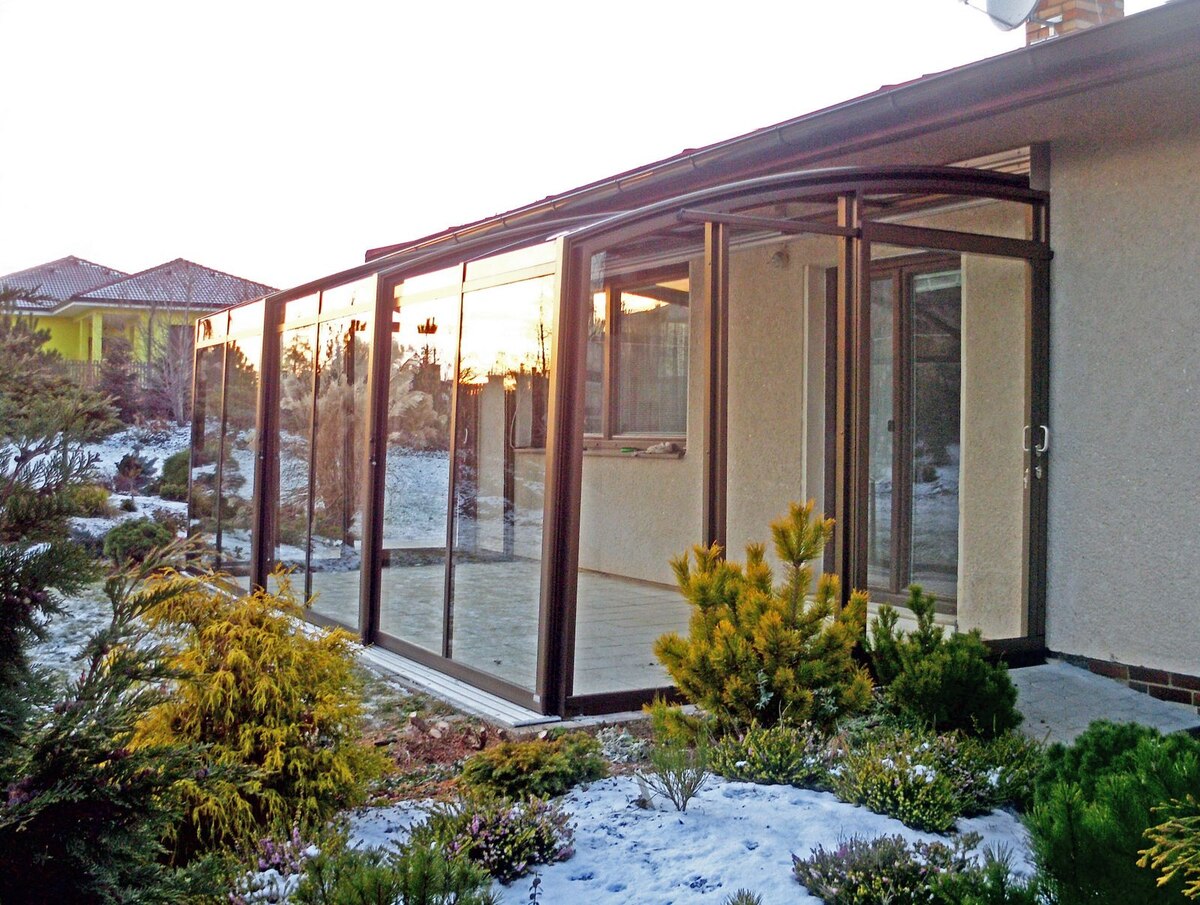
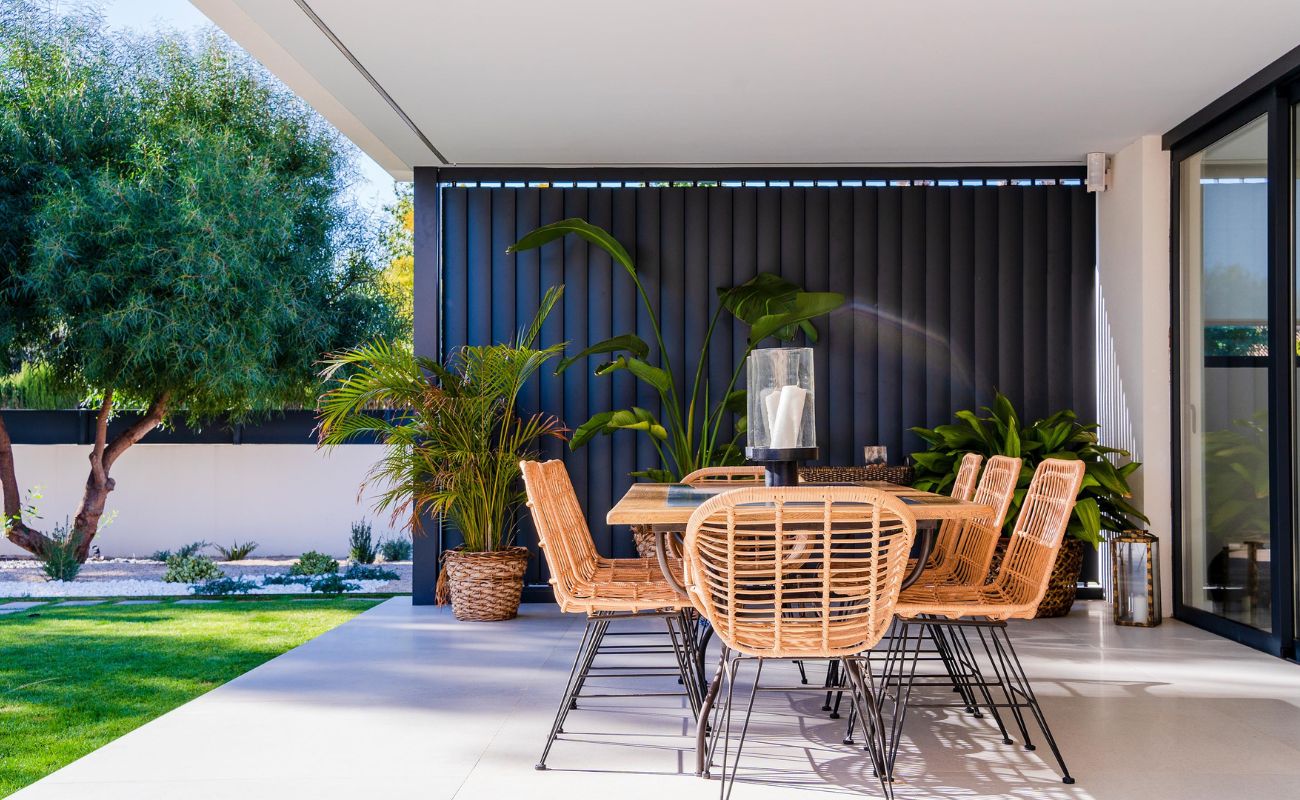
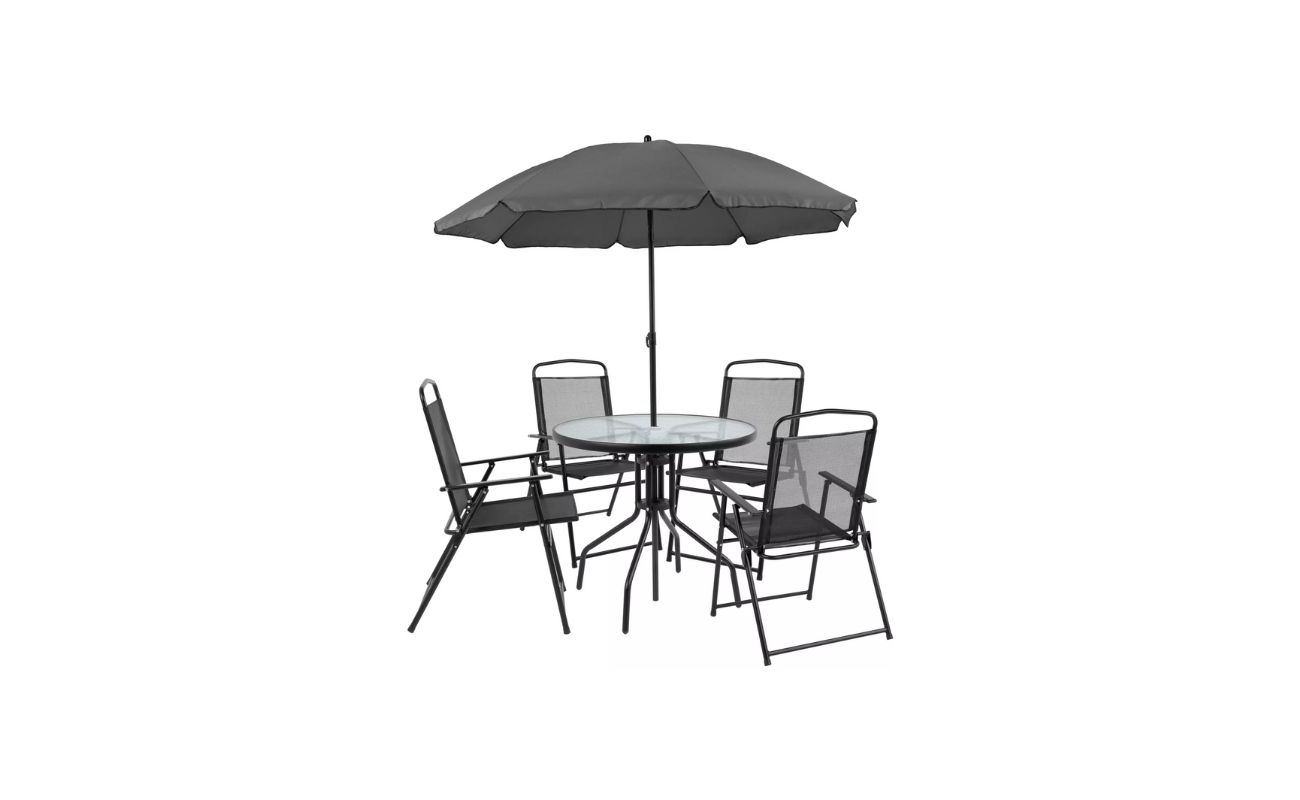
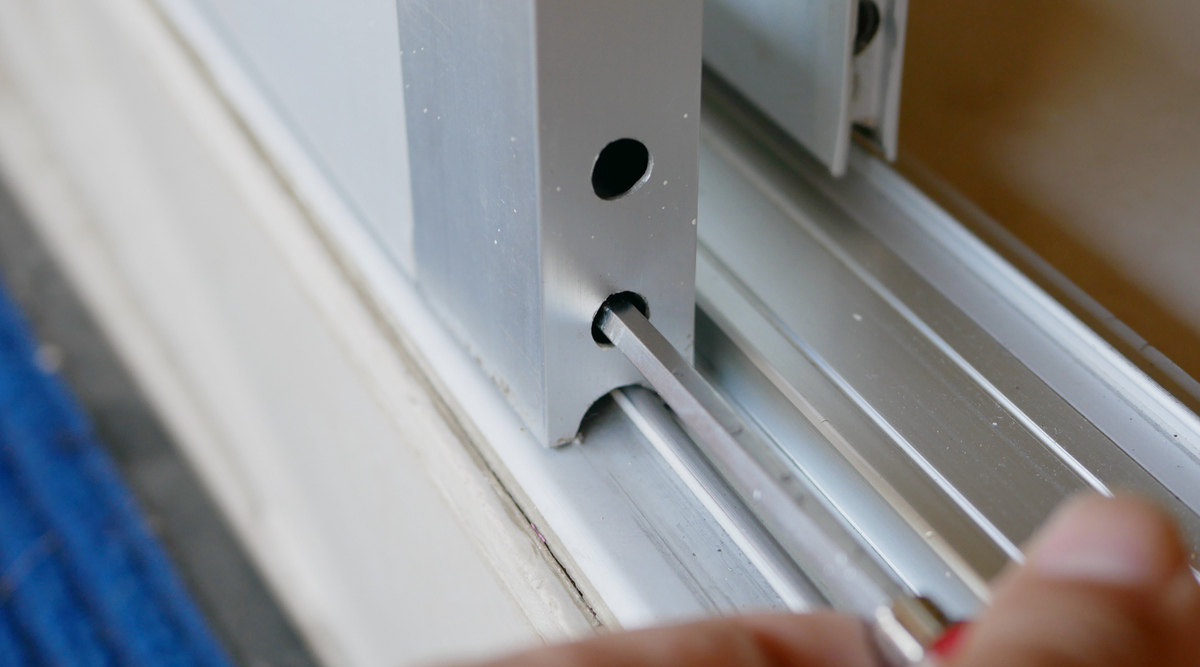
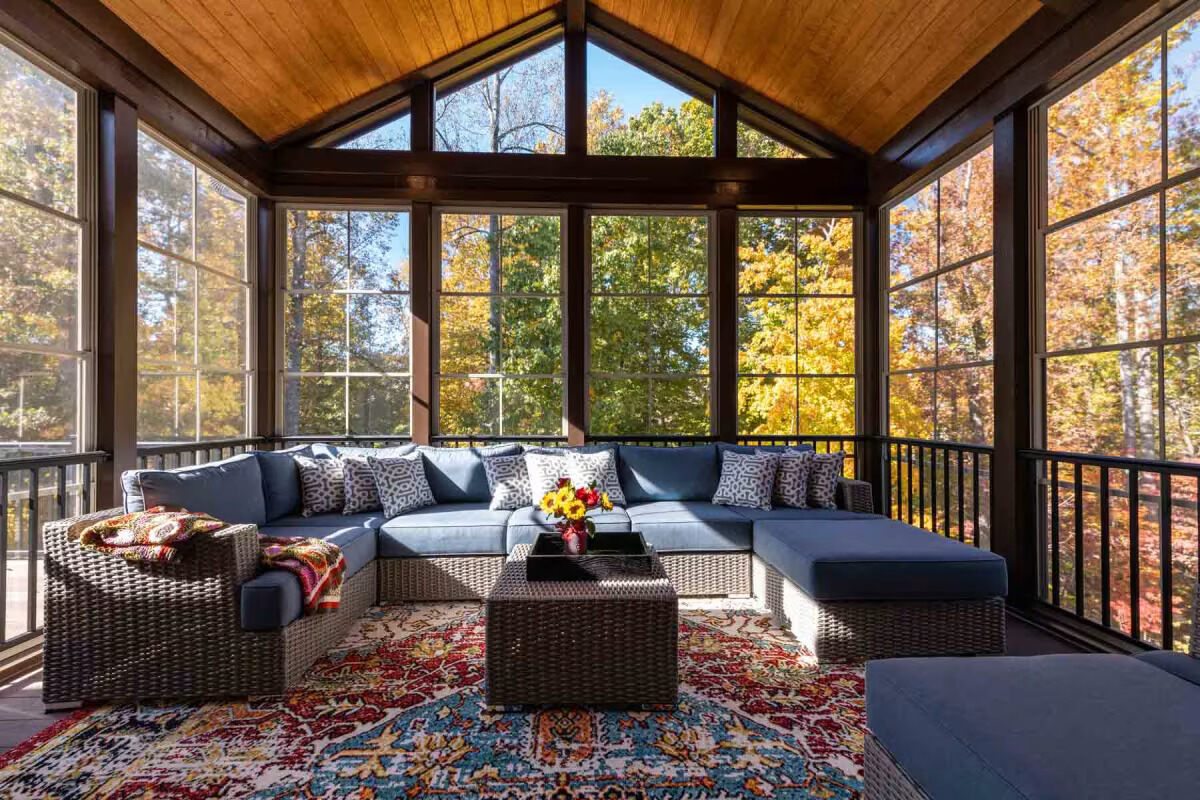

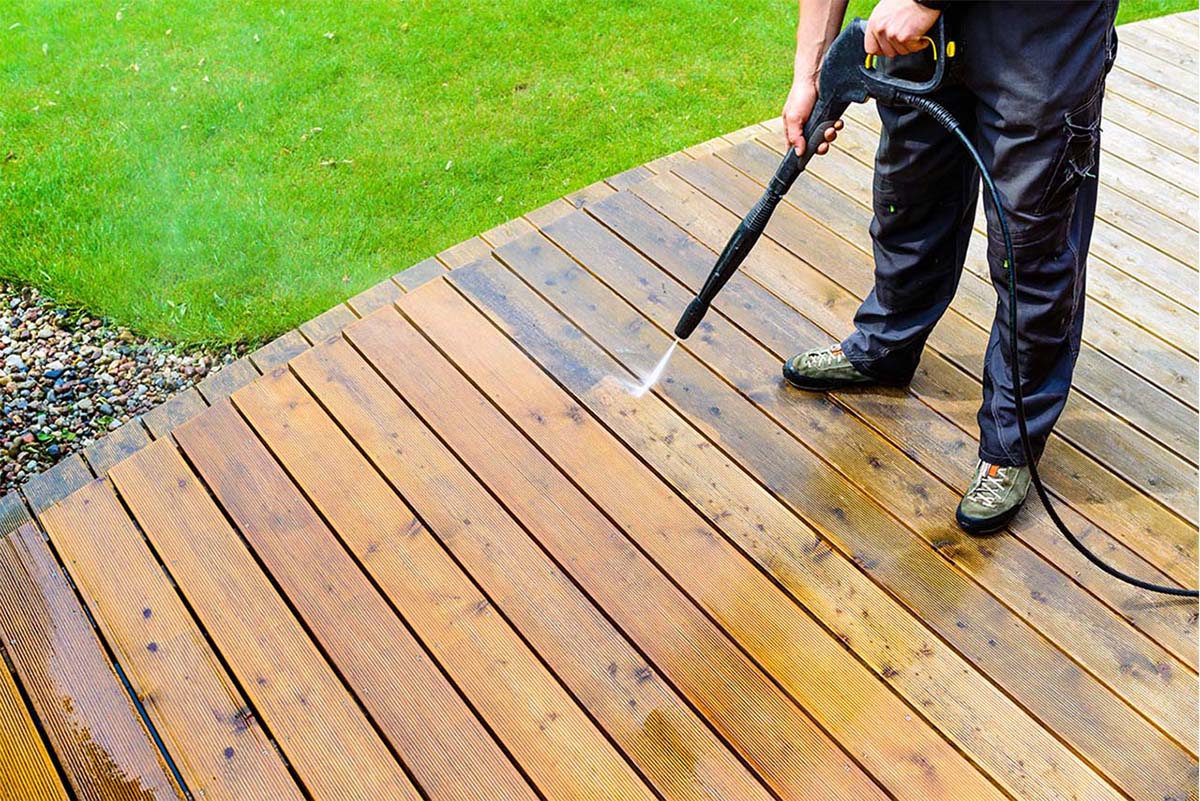
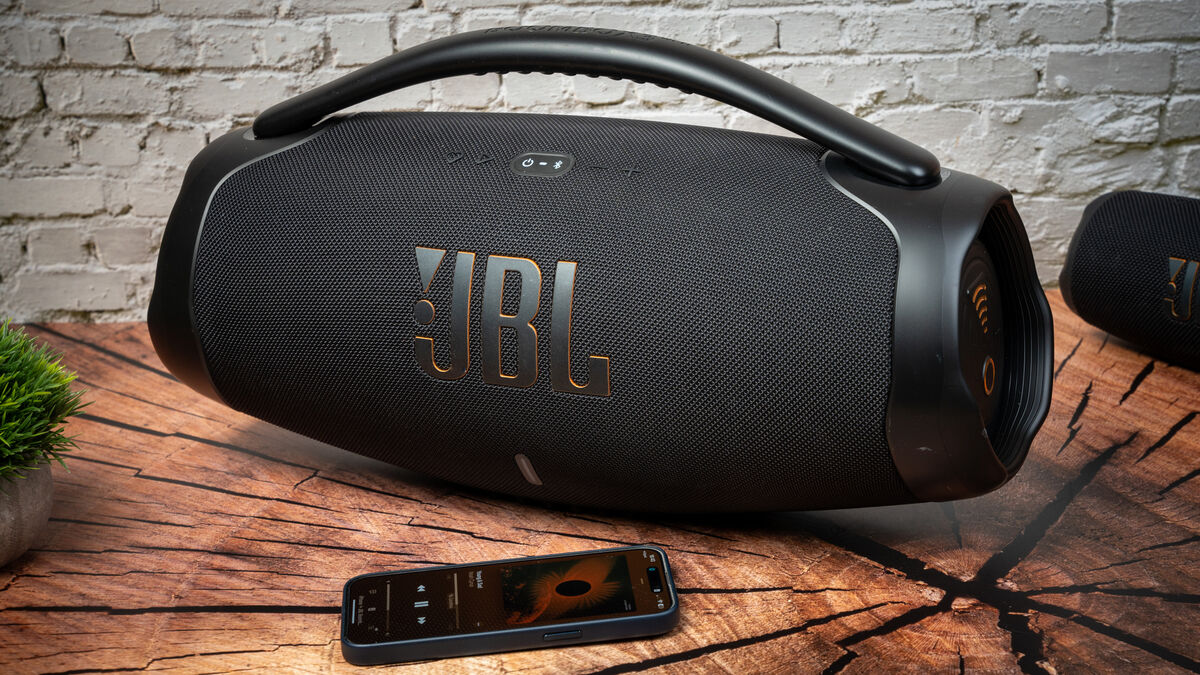
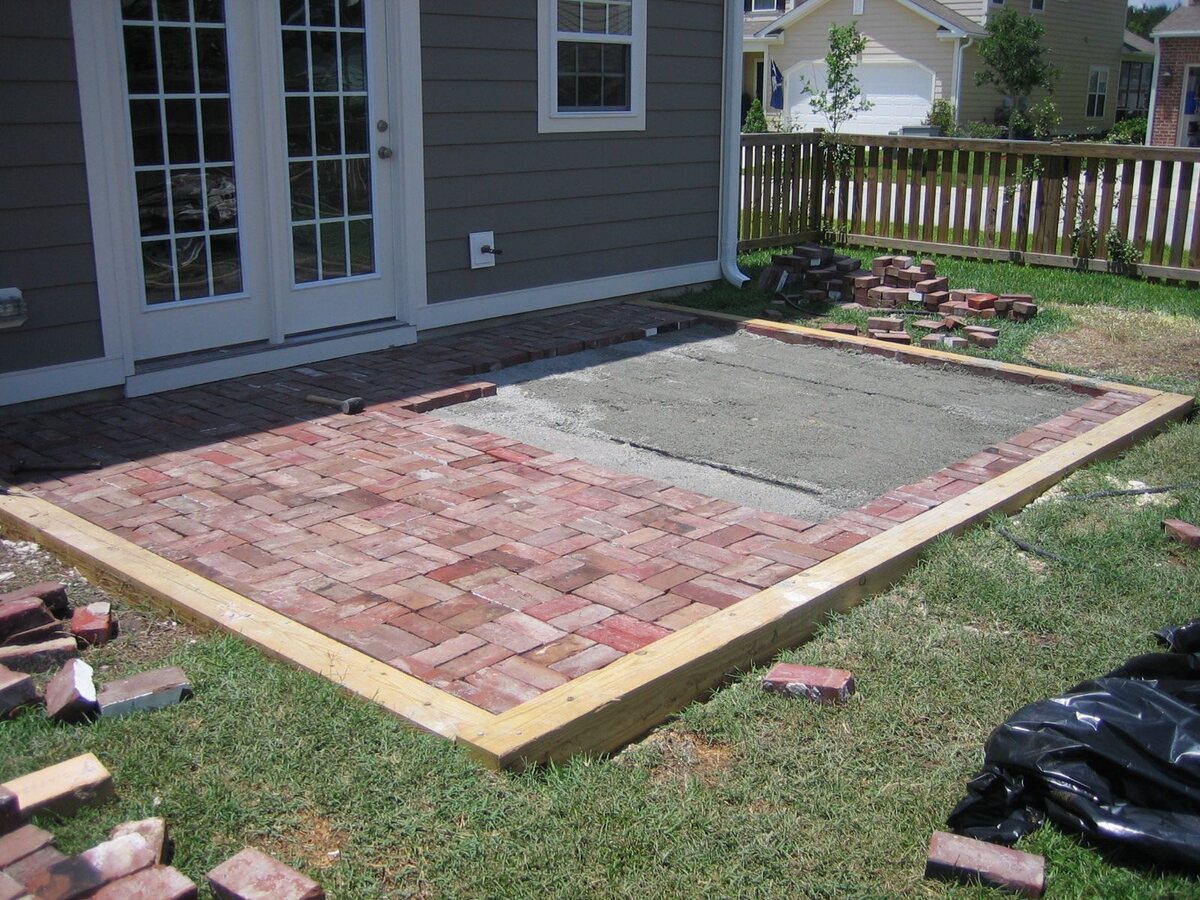
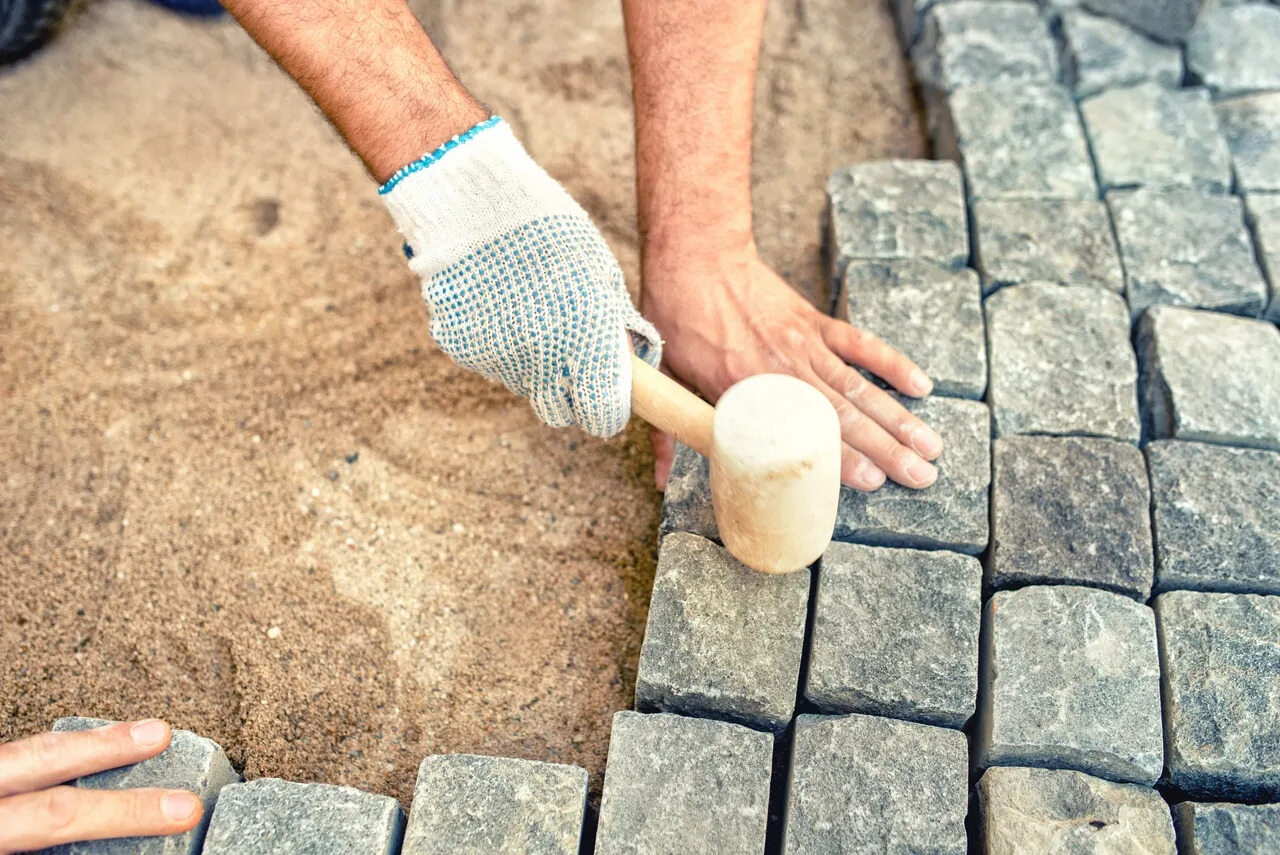
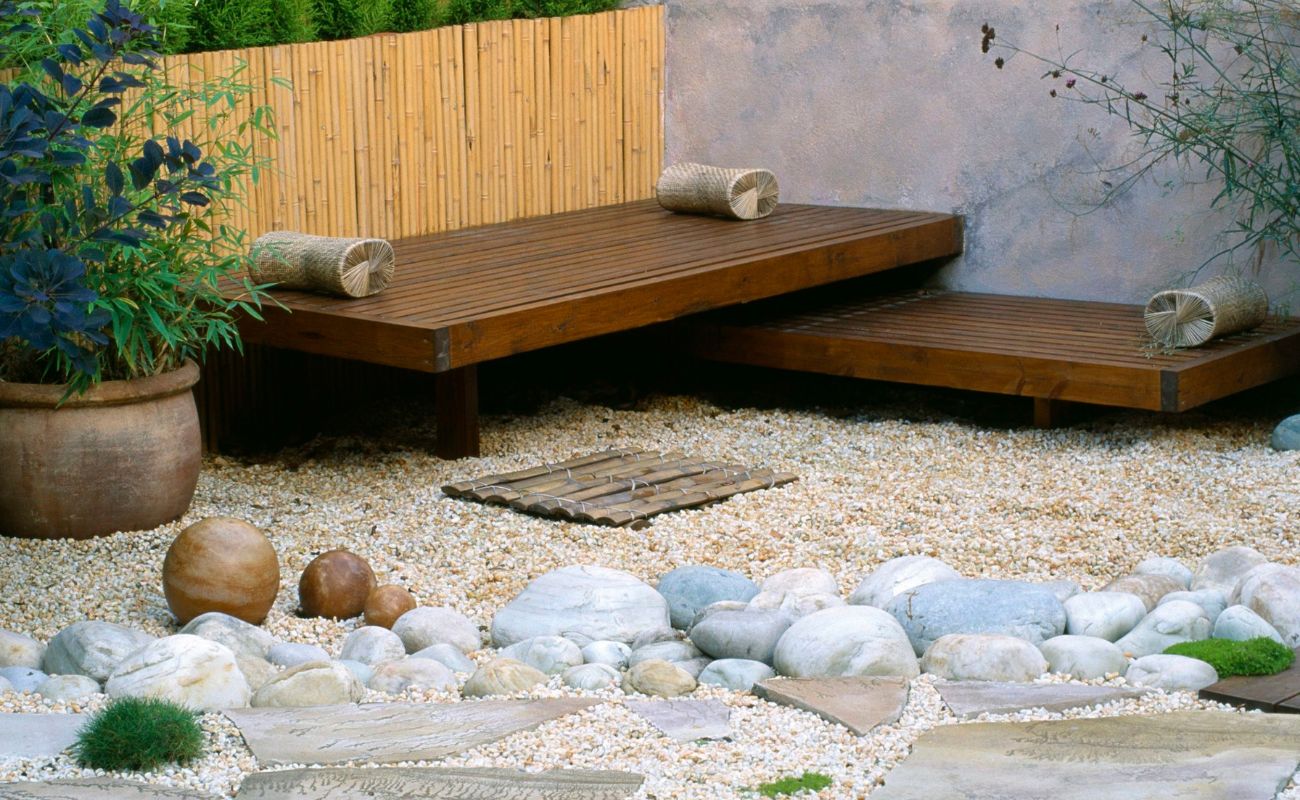

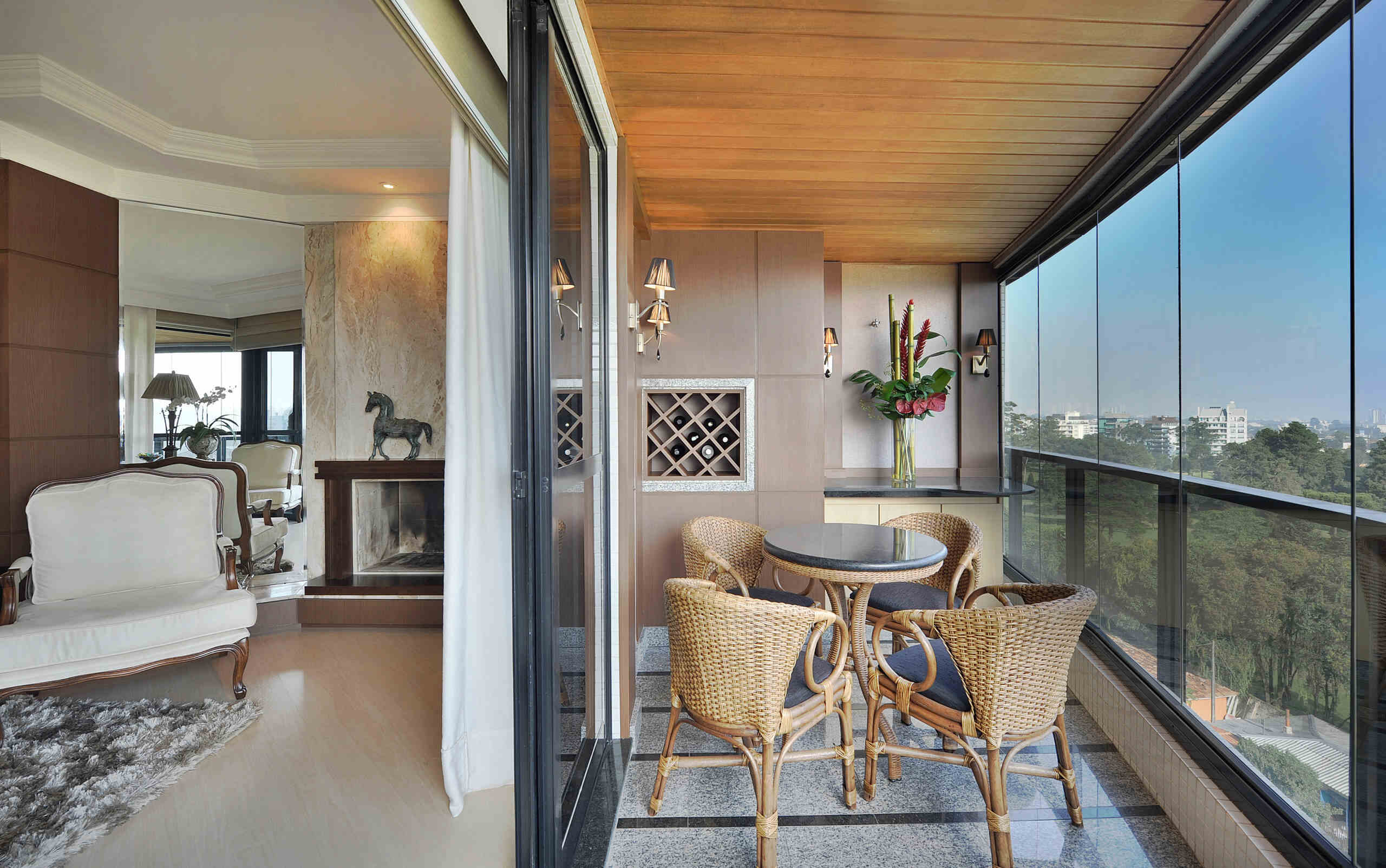

0 thoughts on “How Do I Enclose My Patio”